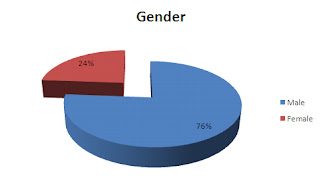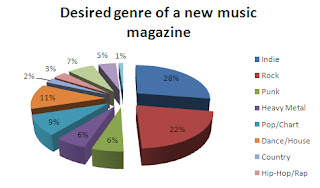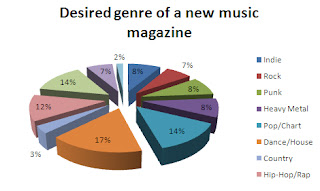Classic Rock
Contents Page
 Photography
Photography"Features" page
The main photo on the "Features" contents page is again a live image of Pete Townshend, this highlights the fact that The Who were a live rock band - and the only way you could see them prefrom was to see them in concert, unlike in todays society where we can easily see live performances on youtube and on music channels. Again by not using a studio image, "Classic Rock" is underlining the fact that the band is no longer together, and that a studio image is not appropriate. Also by using a live image, we are able to capture the image of the band and re-live their style and concerts - which appeals to readers who are no longer able to see this band with its original line up. The bottom of the page is littered with old concert tickets and newspaper articles. It also features a picture of Pete Townshend which is foregrounded out of this smaller images. The newspaper clippings and tickets are a visual reminder of how popular the band was and of their achievements they gained over the years. It allows the reader to quickly regain memories of the band in their heyday before they go to read the feature article about the band. The foregrounded image of Pete Townshend serves as a contrast to what the band was like during their live performances (the main image) and what they were like in general - allowing the reader to feel more intimate with the band, like they knew them personally, even though this isn't a studio image.
"Regulars" page
Much like the cover page, the "Regulars" contents page uses just one image. This image is of Bruce Springsteen in an iconic pose. The magazine promotes the fact that their magazine is for "classic" bands and artists by using an image in which you can not see Springsteen's face - which is the way we would normally recognise the artist being captured. By using this image, it is showing that the readers can recognise artists simply by seeing images - they do not need the obvious ways to acknowledge who the image is of. As there is only one image it adds to the legacy of this image - the image is a stand alone image and is does not need to be supported by others surrounding it. This image is iconic of Springsteen and we do not need additional photography to tell us of who he is, or how successful he is. The image and how strong it is, is further added to by the fact that it is black and white. By being black and white it is stripping away all addition persona that can be added to a person by the colours they wear (e.g. Lady Gaga is recognisable for the bright colours and outfits she wears) and leaving the bare essentials. By using such a strong image that readers can relate to, they are made to feel connected to the peice as they understand the image whereas people from a different audience may not.
Colour Scheme
"Features" page
The colour schemes used on this contents page are similar to the ones on the cover page, except that the gold is replaced by black, which could be seen as a lack of importance to this page to add gold colours, which is quite a rich and important colour. The red tint that is on the main image ties in with the caption "red-hot", showing a denotation of him being red hot. Again as discussed with the front page red has connotations of passion; this could be to show the passion of Pete Townshend on playing live. Also because there is little use of red on the rest of the page, the fact that this image is red dominates its surrounding which allows attention to be drawn to itself. The colours used give a sense of familiarty, and allow the reader to feel comftable with the setting of the magazine as it is keeping at a consistent rate. The use of black contrasts with the white background, giving the text significance and allowing it to stand out to the reader. The use of red and white against darker backgrounds again allows for contrast and for the reader to draw their attention to this
"Regulars" page
The use of red, white and black in continued on to this page, again adding to consistency and familiarity for the reader, however there is an addition to the colour grey. The colour grey is added to the main titles such as "photo pass". It is significant that these titles are in the colour grey and that they are on the regulars page. By being in the magazine every single week, it is adding even more the theme of older things in the magazine, and by using a light and faded grey colour it could be viewed that the colour has faded over time due to the fact it is there every week. By not using a colour that runs throughout the colour schemes, it is seperated from the rest of the text - it shows that this part of the magazine is consistent and relied upon, it is ritual, however the people featured in these parts of the magazine change weekly, and hence by using a seperate colour it shows the reader that this is always the same. By using the colour red for the names of artists and bands featured in the magazine, the readers are drawn to it, therefore giving an idea of what is to come, and to persudae the reader to continue reading.
Fonts
"Features" page
There is a mixture of fonts on this page, with serif fonts being used for the headings e.g "46 Pantera". These are used to show that these are this is the main part of the contents page and that these are the parts that give the information of what is to come throughout the magazine. Also these headings are the parts that will be read first, so by continuing the "classical" mass head theme from the front cover, the magazine eases the reader into familiarity and comftability. It also adds to the feel of superiority - the headings are the formal part of the contents page, so by using serif fonts, they seperate themselves from the rest of the text on the page. Sans serif fonts are used throughout the rest of the text, such as the statements underneath the headings. This text is much smaller, which could be seen as a sign that they are not as important as the headings as the headings are the ones who grab the readers attention. The text which is placed on top of the image is also sans serif (and larger) which contrasts with the formality of the headings.
"Regulars" page
The regulars page uses the same style of fonts, this allows for a similar feel throughout, which adds to the consistency of the magazine and adds to reader familiarity and allows theme to feel comftable with the style which is likely to run throughout the magazine.
Writing Style
"Features" page
The page, again, does not have lots of writing on it, and is again overpowered by images. However the writing that is on there is breif and straight to the point. It lets the reader know what is in the magazine and doen't add unneccessary information that the reader does not want/need to know. The register is again medium, it is not too complex or formal, as this wouldn't appeal to its intentional audience. It does use some rhetorical questions, "Crisis? What crisis?" which allows the reader to think, and gather their own views before reading the article. Despite being brief, it manages to give quite a detailed insight to what the articles are about, this techinque allows for intrest to be generated by the readers. With that taken into account, the magazine doesn't overpower its readers will lots of information, it allows the classic names to create intrest in the articles and therefore allows the readers to feel at ease with the magazine and overwhelmed by a page full of information. Aswell as this, it gives the readers a chance to again pay intrest to the images, as they are not obstructed by lots of text, something that will appeal to the readers.
"Regulars" page
Along with having similar fonts, the two contents pages have similar writing styles. This gives the reader a chance to get used the style that will be used through the rest of the magazine. However this page has used a pull quote in one of the statement boxes underneath the headings. This is a technique that allows the reader to preview what the article will feature, and it again allows excitement to build in the reader, and ensure that they will read the rest of the quote. It does not overwhelm the reader with information, but strikes a balance of what is the right amount of information to give. The magazine uses simple declaratives; simply statements of what is going to be in the articles, this way the article is not pushed upon you, and the reader feels more at ease with the features.
Text/Picture Ratio
"Features" page
The pictures again are the dominant feature on the page, which again has a ratio of about 1:2. The reader is not overloaded with information on the page, as the images often create a great generation of intrest, and this is often a selling point. Aswell as this, readers are more often intreseted in looking at images are they allow you to relate with the band more and relive memories more than words; this is particularly true in this case, as this article is about an old band that is no longer together; articles about them are rare and therefore the images are more important to the readers. The contents could have had more text included, however I do not feel it would have looked as good, as this balance seems to work well.
"Regulars" page
In this case, the text is larger than the image, with it being around a 2:1 ratio. This may be because the "Features" contents page is focusing on the main article and therefore adding many images in order to promote the band and the article itself, whereas the "Regulars" contents page has the same setting each week, so therefore readers know whats going to be on here, and therefore it doesn't need to be decorated with images as much. As well as this, the image that is used is so iconic and so recognised, there was no need to add extra images. The amount of text is at a similar amount, it just seems to the reader that there is more writing because there isn't as many images to look at as there was on the previous page. Like the previous balance worked, I also feel this one is balanced well, and even though there is only one image, it does not look bare.
Overall
"Features" page
The "Features" contents page emphasises on the classic imagery of the band, it focuses on achievements previously gained and showing the popularity of the band, with little reading. It is captivating the idea of live images and the popularity of them with their fans and using this in excess over the page. The writing is brief, but gives a good detail of what is to come in the magazine, which appeals to the reader, and to what they look for in a music magazine and it also allows the reader more viewing time of the images, whilst the colour scheme allows the readers to feel a continous pattern emerging and to familiarise themselves with fonts and styles of the magazine.
"Regulars" page
The "Regulars" contents page has much more focus on text, with the one and only image being an image of Bruce Springsteen, however it is an iconic image and stands strong against the white background. The page uses minimal amount of colour, with the colour red only being used for the name of bands/artists featured and page numbers. By mainly using the white and black colours it is a reminder that everything that happens on that page is there weekly and could be seemed as saying that the page is consistent and the same weekly. The writing is kept breif again, but still has detail in there, with the text being the main focus on this page.



























